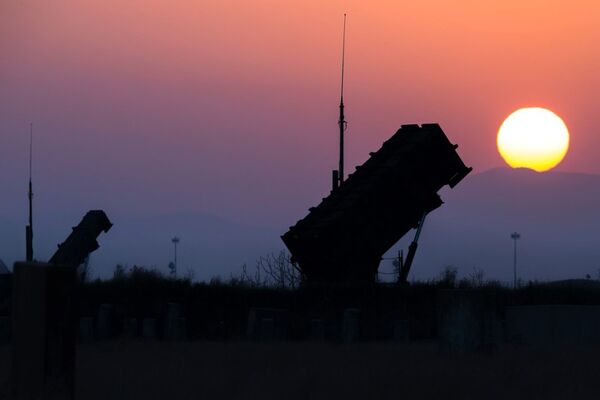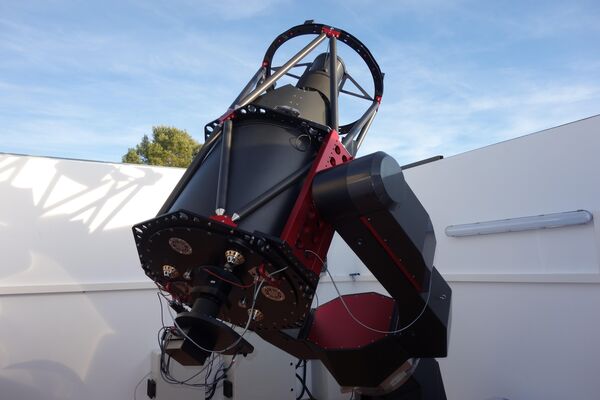- About
- Intara
- Capabilities
- Advisory
- Resources
- News
- Store
Ukraine conflict: US to deploy Patriots to Poland, Germany and Netherlands to follow suit in Slovakia
09 March 2022
by Nicholas Fiorenza


The United States is to deploy Patriot to Poland, and the Netherlands and Germany are preparing the joint deployment of the air defence system to Slovakia. (Dutch MoD)
The United States will reposition two Patriot air defence batteries to Poland, and Germany and the Netherlands are planning to deploy their own Patriots to Slovakia.
The US European Command (EUCOM) announced on 9 March that its commander, General Tod Wolters, had directed US Army Europe and Africa to reposition the batteries at the invitation of Poland.
EUCOM said, “This defensive deployment is being conducted proactively to counter any potential threat to US and allied forces and NATO territory. This is a prudent force protection measure that underpins our commitment to Article 5 [the collective defence clause of the North Atlantic Treaty] and will in no way support any offensive operations. Every step we take is intended to deter aggression and reassure our allies.”
The Dutch Ministry of Defence (MoD) announced on its website on 8 March that the Netherlands and Germany were preparing the joint deployment of Patriots in Slovakia at the request of NATO. Dutch Defence Minister Kajsa Ollongren said the government cabinet in The Hague agreed in principle to deploy the Patriots. She added that this would involve the deployment of 150–200 air defence personnel as quickly as possible after a formal cabinet decision.
The Dutch MoD said the deployment's purpose is to protect the eastern flank of NATO territory against incoming projectiles, noting that the Patriot can destroy aircraft, helicopters, and ballistic and cruise missiles up to a range of 60 km and a height of 20 km.
Germany's chief of defence staff, General Eberhard Zorn, was quoted on the Bundeswehr website on 3 March as saying that under consideration was “what we can do to support the defence belt that NATO wants to build”, mentioning not only Patriot but also Germany's Ozelot air defence system.
UK explores new radar and IR tech to enhance SDA
26 April 2024
by Olivia Savage


UK company Spaceflux has been contracted to develop and operate a ground-based SDA sensor as part of Project Nyx Alpha to monitor objects in GEO for UK Space Command. (Spaceflux)
The UK's Defence Science and Technology Laboratory (Dstl) is conducting three technology demonstrator programmes to explore the utility of novel space domain awareness (SDA) technologies.
The first programme is exploring the development of a Deep Space Radar (DSR) designed to monitor and protect geostationary orbit (GEO) assets such as the Skynet satellite communications system, William Feline, senior principal advisor for SDA at the UK Ministry of Defence (MoD), said at the Military Space Situational Awareness Conference 2024, held in London from 22 to 24 April.
The purpose of the programme is also to assess whether the UK needs its own DSR capability or whether it can rely on or complement the Deep Space Advanced Radar Capability (DARC) currently being developed alongside Australia and the US, Emma Kerr, senior principal engineer for SDA at Dstl told Janes .
A monostatic or biostatic system is being considered as well as whether a new or existing system is required, Feline said.
MDA, Lockheed Martin seek ‘final transition' of LRDR
26 April 2024
by Carlo Munoz


An artist's concept of how Lockheed Martin's LRDR would detect ballistic missile launches from Asia. The radar completed preliminary design review in March and will go through critical design review in September 2027. (Lockheed Martin)
The Pentagon's Missile Defense Agency (MDA) and its industry counterparts at Lockheed Martin are preparing for the ‘final transition' of the long-awaited Long Range Discrimination Radar (LRDR) to the US armed forces in the Indo-Pacific region.
LRDR programme officials officially transitioned control of the S-band missile defence radar to the MDA on 23 April, according to a company statement. The handover of the system, currently stationed at Clear Space Force Station in Alaska, will allow agency officials to finalise the Operational Capability Baseline (OCB) milestone, which is the final stage before the LRDR is handed over to US Space Force (USSF) units. “Prior to this transition, the system has started space domain awareness data collects” for USSF units, the 23 April statement said.
Rafale enters Croatian service
26 April 2024
by Gareth Jennings


One of the first six Rafales to be delivered to Croatia. Deliveries of all 12 aircraft will be complete by mid-2025. (Dassault)
Croatia has inducted into service the Dassault Rafale combat aircraft it recently received from France.
The manufacturer announced the milestone on 25 April, saying the first six of 12 Rafales had been formally received into service by the Croatian Air Force (Hrvatsko ratno zrakoplovstvo i protuzračna obrana: HRZ i PZO).
Having been handed over to the Croatian Ministry of Defence (MoD) at the French Air and Space Force (Armée de l'Air et de l'Espace: AAE) base at Mont-de-Marsan in France in 2023, these initial aircraft were received into the 91 operational base near Zagreb in a ceremony that was attended by Croation Prime Minister Andrej Plenković and Minister of Defence Ivan Anušić.
With the Rafale to be operated by 191 Squadron, the first of the follow-on batch of six aircraft will arrive in Croatia by the end of 2024 to complete the unit by mid-2025.
For more information on the Croatian Air Force, please seeCroatia – Air Force .
The United States will reposition two Patriot air defence batteries to Poland, and Germany and the N...
Latest Podcasts
Iran Israel analysis
In this podcast Janes analysts discuss the Iranian attacks on Israel on the 14 April. They highlight the military systems used by Iran and the performance and impact of these on Israel. They also discuss the implications of this attack goi...
Listen nowJanes Case Studies
Using Janes Intara to build a common intelligence picture: Russian build up on the Ukrainian border
View Case StudyNews Categories
 Defence Details
Defence Details